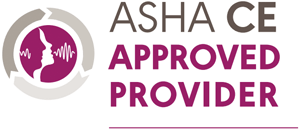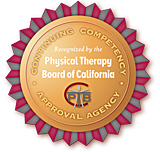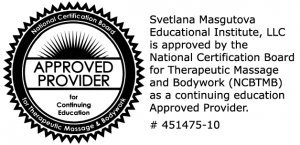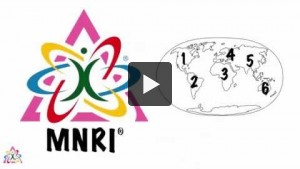


Event Registration

Educational Institute LLC
3.2 ASHA CEUs



MNRI® NeuroStructural Reflex Integration
A digital copy of the manual is included with your registration.
Hard copies are available for purchase following registration.
Dates: August 8-11, 2024
Location: Minneapolis, MN
Address: A Chance to Grow, 1800 Second St NE, Minneapolis, MN 55418
Instructor: Trina Deiss
CEUs: This course is offered for ASHA CEUs
(Introductory level, Professional area)
This course is offered for AOTA CEUs / Contact Hours
(Introductory; Occupational Therapy Process: Evaluation, Intervention)
CE Hours: This course is offered for 32 NCBTMB CE Hours
- MNRI® Archetype Movement Integration
- MNRI® Dynamic and Postural Reflex Integration
- MNRI® NeuroTactile Integration
- MNRI® Lifelong Reflex Integration
- MNRI® Visual and Auditory Reflexes Integration
- MNRI® Proprioceptive and Cognitive Integration
The Masgutova Method® is a set of programs focused on the restoration and maturation of primary movements, reflexes, coordination systems, skills for optimal performance of natural mechanisms, developmental processes, brain functioning, and sensory-motor integration. You can read more about Reflexes and MNRI HERE.
Watch an overview of how MNRI works
The Mission of the Svetlana Masgutova Educational Institute (SMEI) is to provide health, wellness and educational professionals, parents, and caregivers with non-invasive techniques to address maturational, developmental, and life challenges.
Course Overview:
The MNRI NeuroStructural Integration program was created by Dr. Masgutova to address the stress response known as the Tendon Guard Reflex (TGR). Tendons consist of fibrous tissue that connects muscles to bones. Tendons, muscles, and joints work together to provide structural support and flexibility in the body while accommodating a wide variety of outside forces during rigorous activity to rest. The TGR involves the tendon/muscle/joint system that spans from the tip of the big toe to the back of the head (starting with the big toe, continuing to the foot tendon, the Achilles tendon, hamstrings, sacrum, spine, various back and neck muscles to the back of the head). The TGR is a whole body reaction that helps mobilize the body for protection (through freeze, fight, and flight) and development (through pause, learn, and advance). Dr. Masgutova refers to the freeze and pause mechanisms as the Red Light TGR and the fight/flight protection mechanisms and learn/advance development mechanisms as the Green Light TGR.
Red Light TGR
The Red Light portion of the TGR causes the abdominal, shoulder, and neck muscles to contract preparing the body to deal with either an unexpected situation or a situation that requires intense focus. In either case, the body stops action, quiets itself, and prepares or focuses the ears and eyes to isolate details important to the situation. When mature, the Red Light TGR supports a person’s ability to narrow his field of attention, movement, and action so that he can critically pause to isolate details important to his task. When not mature, the Red Light TGR can result in either a hyper- or hypo-active response. A person with a hyperactive TGR is over-focused on unimportant details, can perseverate, or simply shut down or freeze. A person with a hypoactive TGR seems unaware that focused attention is needed and continues with whatever activity he is actively engaged in, remaining oblivious to any need relating to a looming danger or obligation.
Green Light TGR
The Green Light portion of the TGR causes spinal muscles to contract, lifting and extending the spine, and preparing the body for action. A baby activates his spinal muscles when learning to lift and right his head, arch his back, raise and stretch his legs and arms, and eventually stand and walk. The Green Light TGR works throughout this process to provide structural support and flexibility necessary to ensure protection and development. When mature, the Green Light TGR widens a person’s field of vision, movement and action, so that he can see the big picture and act with forethought -- allowing him to learn and advance. When not mature, the Green Light TGR can also result in either a hyper or hypoactive response. A person with a hyperactive Green Light TGR often acts without much forethought, can misread the situation, and respond impulsively, often resulting in a fight or flight reaction without much provocation. A person with a hypoactive Green Light TGR remains relatively nonresponsive to events and experiences that generally elicit action in others.
Body Symmetry & TGR Dysfunction
The MNRI NeuroStructural Integration program determines the current state of the TGR by assessing various aspects of body symmetry. Symmetry indicates that the TGR is matured and appropriately integrated, while asymmetry indicates TGR dysfunction. Asymmetry is often found when developmental and learning challenges are present. This is because ongoing challenges often cause chronic tension to build up in muscles and tendons. The NeuroStructural Reflex Integration Program techniques are designed to reduce protective tension present in the body.
Learning Objectives: MNRI® Neuro-Structural Reflex Integration
- Describe the process of using core flexion-extension mechanisms to describe the protection (freezing response) and survival (fight and flight response) strategies of the brain.
- Describe the role of the Red Light Tendon Guard Reflex (H. Selye, 1974) and its effect on the abdominal, shoulder, and neck muscles when preparing the body to deal with either unexpected situations or a situation that requires intense focus or a quick reaction.
- Explain the importance of a matured Red Light Tendon Guard Reflex for the process of being able to pause and calm oneself down vs becoming over focused on unimportant details and shutting down.
- Describe the Green Light Tendon Guard Reflex and its effect on muscles around the spine which prepare the body for action.
- Describe the importance of a matured Green Light Tendon Guard for a person to see life’s big picture in order to learn and advance vs becoming hyperactive, acting without forethought, and misreading situations resulting in ‘fight or flight’ reactions.
- Describe how body symmetry and gravity line are used to determine if the Core Tendon Guard is matured and appropriately integrated, or if it is dysfunctional which may lead to inappropriate responses to everyday life challenges.
- Describe the techniques of using neurosensorimotor biomechanical points to release tension in the Core Tendon Guard and activate the proprioceptive system to optimize regulation of a person’s behavior, emotions, and self.
- Describe how the activation of reflex patterns facilitate neurodevelopmental mechanisms for proper physiological functions which provide for easier learning for sensory-motor abilities and skills necessary for daily life functions.
- Describe how improvement of the Core Tendon Guard response determined by activity of the brain stem aids in the development of appropriate and healthy protection.
- Describe how the correct regulation of specialized skin receptors increase tolerance for inadequate hypersensitivity to life’s daily occurrences.
- Describe how the activation of the proprioceptive system increases regulation of muscular-tendoneous tone which works with any negative somatic anchors caused by stress.
- Describe how the diaphragm mobilization technique releases stress and improves breathing.
- Describe how the activation of reflex patterns offer optimization of motor automaticity.
- Describe how activation of reflex patterns offer support for the coordination of the neuro-structural aspects of the body, its reactions and overall cognitive development.
Course Agenda:
Day 1
Hour 1: Movement as basis of natural Development
Hours 2-3: Afferent sensory pathways from target area to spine and brain and efferent motor pathways back to target areas
Lunch 1 hour
Hour 4: Reflexes serve as the neuro-physiological basis for development of infant movements
Hours 5-6: Body Motor Coordination Systems and Brain Levels
Hours 7-8: Core Tendon Guard and Pendulum techniques
Day 2
Hours 1-4: Techniques
Lunch 1 hour
Hours 5-6: Upper limb reflex techniques
Hours 7-8: Lower limb reflex techniques
Day 3
Hour 1: Tendon Guard Regulation
Hours 2-4: Posterior body (sacrum and spine) theory and techniques
Lunch 1 hour
Hour 5: Techniques
Hour 6: Other Reflexes: Pavlov Orientation Reflex
Hours 7-8: Tendon Guard Reflex pattern, symmetry and physical body response to stress
Day 4
Hour 1: Dynamic and Postural Infant Reflex pattern Integration-Front-Back Motor Coordination System
Hours 2-3: Neurostructural techniques for the neck
Hour 4: Postural Reflexes: Symmetrical Tonic Neck Reflex
Lunch 1 hour
Hours 5-6: Trunk Extension Reflex and Tonic Labyrinthine Reflex
Hour 7: Integration of Reflex patterns within Front-Back Body Sides MCS
Hour 8: Implementation of Reflex Development and techniques in therapy
Financial Disclosure: Trina Deiss receives a stipend based upon an enrollment percentage.
Non-financial Disclosure: No relevant relationship exists.
Course Disclosure: The Svetlana Masgutova Educational Institute has developed and patented a licensed technology trademarked as MNRI®. Because there are no other like-kind products available, course offerings will only cover information that pertains to the effective and safe use of the above-named products. This presentation will focus exclusively on MNRI® and will not include information on other similar or related products or services.
Special Needs Requests: If you require special accommodations, please notify SMEI at events@masgutovamethod.com at the time of registration so that needed accommodations can be made prior to the course.
Target audience:
Speech Language Pathologists, Speech Language Pathologist Assistants, Occupational Therapists, Certified Occupational Therapy Assistants, Nurses, Physical Therapists, Physical Therapist Assistants, Educators, Psychologists, Physicians, Massage Therapists, Mental Health Counselors, Other Health Care Providers, Parents.
Criteria for Certificate of Completion and any available Credit Hours or CEUs:
• Full attendance to the entire course
• Participation in practice with instructor feedback
• Post course evaluation
SMEI Cancellation and Refund Policy
Courses are subject to cancellation due to lack of minimum required participants registered for the course within 10 days of the course start date. Full refunds (or transfer of funds to online account for future use) will be issued if the course is canceled due to the low number of attendees.
We recommend that attendees who will be flying do not purchase their flight until after the 10 day window has elapsed to avoid a nonrefundable circumstance with the airline. SMEI is not liable for any ticket costs related to the course being canceled. SMEI is not liable for any costs related to transportation (airline tickets, train, taxi, etc) due to the cancellation of an event.
- Participants will receive a full refund for registration cancellation up to 21 days prior to the course.
- A 10% administration charge will be retained for cancellations within 15-20 days prior to the course.
- A 25% administration charge will be retained for cancellations within 14 days prior to the course.
Manual Download Policy
Once a student has downloaded the manual or any course resources, payment for this course can be transferred to a different time and location of the same course; however NO REFUNDS and NO TRANSFERS TO A DIFFERENT COURSE are allowed, even if the course is cancelled by the LAC or Instructor.
Transferring Policy
Participants who wish to transfer registration and payment to another
SMEI course may do so.
*Participant must have selected the course they wish to transfer to at the time of the request. All refunds will be held until the transfer course has been selected.
* A 2.5% transaction fee (processing fee) will be withheld on all refunds that were processed using credit card/PayPal. If a participant wishes the refund to be paid directly to their account via credit card/PayPal, PayPal may also charge the participant an additional 2.5% transaction fee (processing fee). Refund by check is available upon request. For questions contact us.

